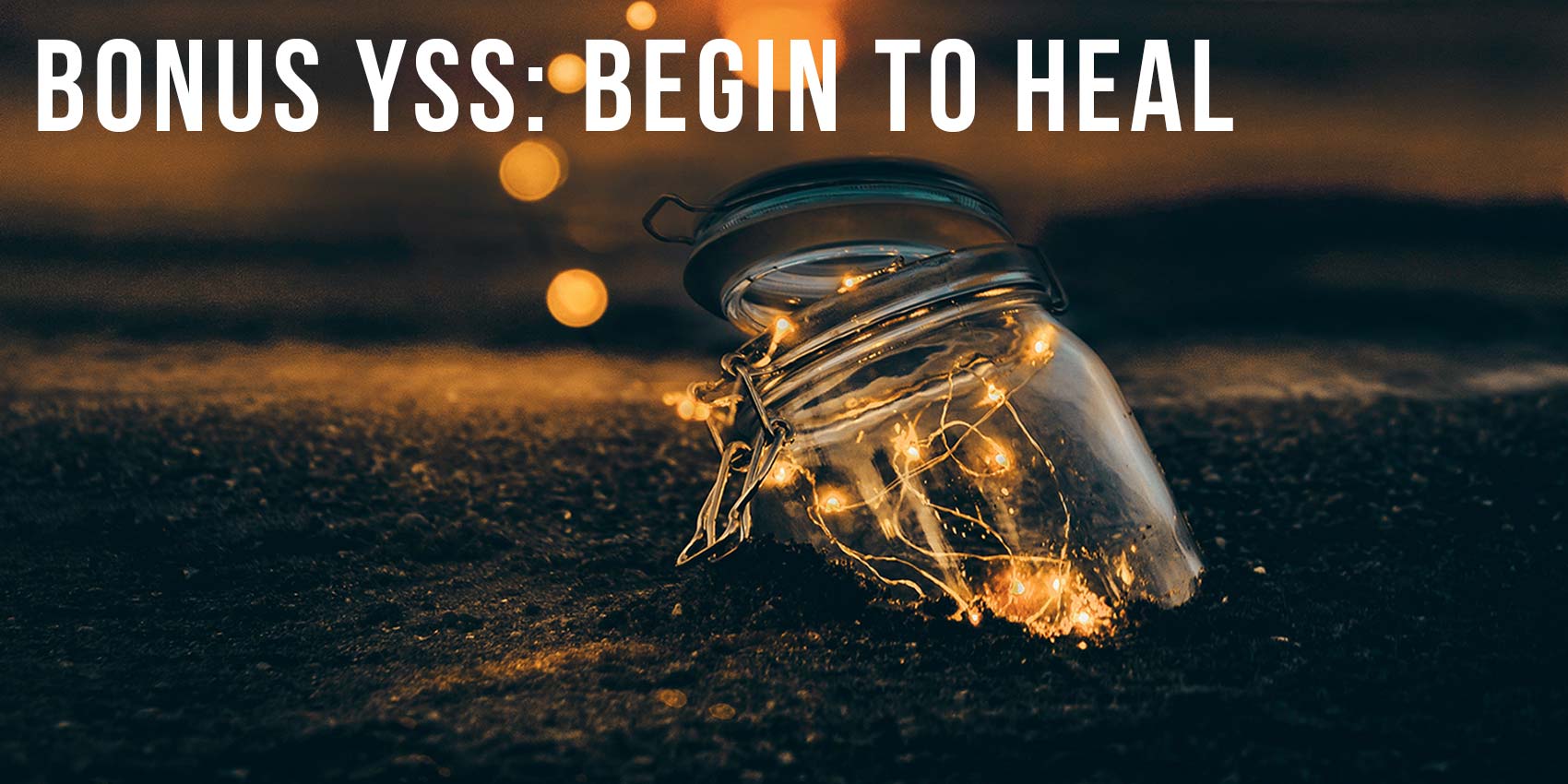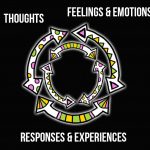01 Mar Bonus YSS: Begin to heal


When trauma happens our body and mind react in a way that changes us forever. But we can grow through those changes!
To start that journey, check out the diagram to the left. This is that famous cycle you keep reading about.
Basically, what you think about will drive your emotions. And that will drive your experiences. And then you’ll have more thoughts, and those thoughts will lead to more emotions…. and you soon see why it’s a cycle.
In an effort to make that cycle more positive, you’ll need to connect the dots between thoughts, feelings and experiences when it comes to trauma. In general (trauma or not), this is called self-regulating. At the core of our internal self is our ability to regulate our thoughts, feelings and our responses. Therefore, self-regulating is managing our thoughts, feelings and responses as we experience life.
When we have been repeatedly traumatized, we have trouble self-regulating in a beneficial way. We are so used to using our survival instincts (fight, flight or freeze) that our behavior suffers. Our self-regulating has turned into a cycle of negative thoughts (only bad things happen to me), horrible feelings (fear, anxiety, stress, terror), and responses (poor behavior).
In order to stop the cycle of trauma and the ongoing symptoms we need to rewire our thoughts, emotions and responses to a new pattern of resilience and strength. (If you are not currently safe from ongoing trauma, read the Trauma 101 post on What To Do for details on how to find help.)
Here are two preliminary ideas.
Thoughts and feelings
When your thoughts drive your feelings, monitor your thoughts and develop positive mantras when you find yourself thinking negatively. Mantras are short phrases you say to yourself that help “pick you up” in a situation. Like, “I’ve got this!” when faced with a challenge. Yes, this is part of positive thinking!
When your feelings drive your thoughts, monitor your feelings and when you feel scared or anxious or about to explode, have a plan ready: walk away, count to ten, close eyes and breathe. Just have a plan so you don’t explode.
Building trust
Recognize that trust is likely hard for you if you’ve experienced Type 2 trauma. Figure out how you can trust again. Maintain your boundaries to feel safe, but when the right person comes along, let him or her in. Yes, letting someone in may take time, but relationships are the key to recovery and life! Most people who have recovered from trauma report that other people were often the key factor in their recovery process.
Most important though, if you have suffered from repeated trauma, seek help. Find someone to work through what has happened, explore how it has impacted you and develop a plan for healing. Through such work, you can find new ways of being and acting. You can find your inner strength and lead a life that feels comfortable and right.




Answer the post question here
What's being said